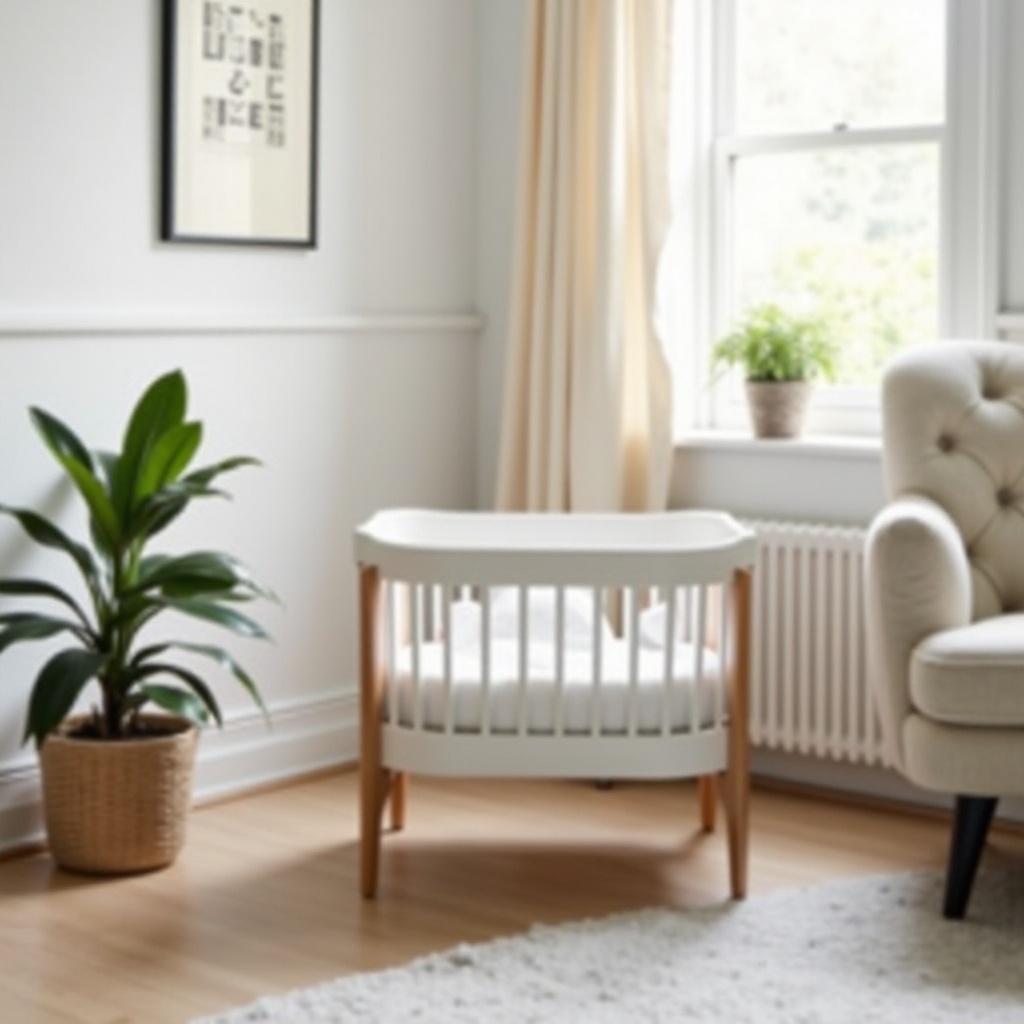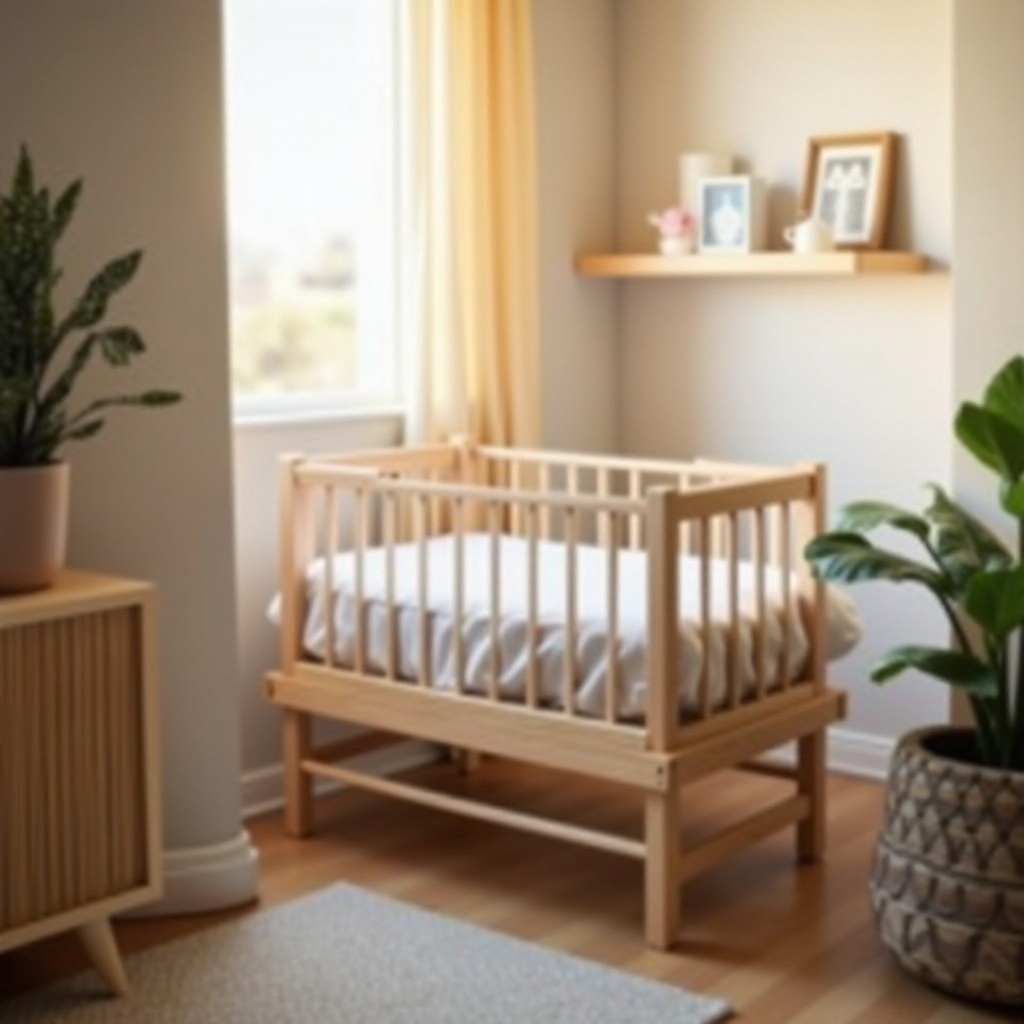Introduction
For new parents with limited living space, finding the right baby gear can be a challenge. A small bassinet designed for compact areas can save space while providing a cozy place for your newborn to sleep. In this comprehensive guide, we’ll explore the top small bassinets for small spaces, their benefits, and key features to consider. Plus, get practical tips for setting up your bassinet in a small area to ensure your baby’s safety and comfort.

Benefits of Using a Small Bassinet
Space Efficiency
A small bassinet can make a significant difference in maximizing your limited space. These compact designs fit snugly beside your bed, in the corner of a room, or alongside other furniture without overwhelming the area.
Portability and Convenience
Small bassinets are often lightweight and portable, making it easy to move them from room to room. This flexibility ensures your baby is always close by, whether you’re in the living room, kitchen, or bedroom.
Multi-functionality
Many small bassinets come with additional features such as storage compartments, adjustable heights, or rocking capabilities. These multi-functional options add value and convenience, offering more than just a place for your baby to sleep.

Key Features to Look for in a Small Bassinet
Size and Dimensions
When choosing a small bassinet, carefully consider the size and dimensions. Measure the area where you plan to place the bassinet to ensure it fits comfortably. Opt for designs that are compact yet spacious enough for your baby to sleep safely.
Safety Standards
Safety is paramount when selecting a bassinet. Look for bassinets that meet or exceed safety standards set by organizations like the Consumer Product Safety Commission (CPSC). Ensure the bassinet has sturdy construction, a stable base, and breathable materials.
Comfort and Durability
Your baby’s comfort is crucial, so choose a bassinet with a comfortable mattress and soft bedding. Check for removable and washable covers that make cleaning easier. Additionally, consider the durability of the materials used to ensure the bassinet can withstand regular use.

Top Small Bassinets for Small Spaces
Bassinet 1: [Product Name]
The [Product Name] stands out for its elegant design and compact size. It features a breathable mesh side for optimal air circulation and visibility. The adjustable height settings and easy-to-move wheels make it a versatile choice for any small living space.
Bassinet 2: [Product Name]
[Product Name] offers a perfect blend of comfort and functionality. With its built-in storage basket, you can keep essential baby items within reach. The lightweight frame and foldable design make it ideal for parents who need to save space and travel frequently.
Bassinet 3: [Product Name]
The [Product Name] is designed with modern aesthetics and practicality in mind. It includes a gentle rocking feature and a soft mattress that provides a cozy sleeping environment for newborns. The slim profile ensures it fits seamlessly into tight spaces.
How to Set Up a Small Bassinet in Compact Spaces
Strategic Placement
Deciding where to place your bassinet can significantly impact both convenience and space management. Placing it beside your bed can be practical for nighttime feedings and soothing your baby. Ensure there’s enough room to maneuver around the bassinet without obstruction. This setup allows easy monitoring of the baby while integrating seamlessly into your living space.
Essential Accessories
To maximize the use of your small bassinet, consider adding essential accessories such as a portable changing pad, a nightlight, or a clip-on mobile. These items can enhance the functionality and comfort of the bassinet without taking up too much space.
Safety Tips
- Ensure the bassinet is assembled correctly and all parts are secure.
- Keep the bassinet free of pillows, blankets, and stuffed animals to reduce the risk of suffocation.
- Regularly inspect the bassinet for wear and tear, and replace any damaged parts immediately.
Conclusion
A small bassinet for small spaces can be a lifesaver for parents dealing with limited room. By carefully selecting the right product and setting it up wisely, you can create a safe and comfortable sleeping area for your newborn. Consider the benefits, key features, and recommendations provided in this guide to make an informed choice that meets your needs.
Frequently Asked Questions
What size should a small bassinet be?
A small bassinet typically measures between 30-35 inches in length and 15-20 inches in width. Always check specific product dimensions to ensure a proper fit in your space.
How long can my baby use a small bassinet?
Most bassinets are suitable for babies up to 15 pounds or until they can push up on their hands and knees, usually around 4-6 months old.
Are small bassinets safe for newborns?
Yes, small bassinets are safe for newborns as long as they meet safety standards and are used correctly. Always follow the manufacturer’s guidelines and safety recommendations.
